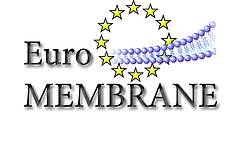
The aim of this EUROCORES Programme on EuroMEMBRANE is to answer long-standing questions in membrane biology using cutting-edge technologies. These will address functional problems in a quantitative manner bringing together experimental tools with theoretical approaches. There will be a special emphasis on lipid-lipid and (glyco)lipid-protein interactions in the plane of the membrane in health and disease. Using various model organisms would allow cross-species comparison and bring an evolutionary perspective to biomembrane studies. This type of research requires a strong interdisciplinary collaboration that covers biological, chemical, physical and computational aspects of membranology over a broad dynamic range of time and length.
It never ceases to amaze how a layer of oil 5 nm thin makes the difference between life and death. The physical laws that govern the behaviour of cellular membranes and their component lipids and proteins are often counterintuitive, especially when coupled with the often bewildering variety of lipids and proteins found in any particular membrane.
Recent technical developments in lipidomics, proteomics and membrane protein structure determination have, however, sparked a new wave of interest in this field. The famous Singer and Nicholson model of a freely mixing two-dimensional liquid has now been replaced by a more detailed model that recognizes additional levels of dynamic organization both across the lipid bilayer (lipid asymmetry), and laterally (membrane microdomains). This has generated the need to know the actual membrane composition and organization, as this reflects the functions of cells and their organelles, transport of membranes, transport across membranes and signaling.
To find out how the membrane lipidome, proteome and glycome can fulfil all the tasks that membranes have is an enormous challenge. This mission will only be accomplished by integrated, multidisciplinary approaches involving (bio)chemists, cell biologists, physicists and information technologists (among others) working together to overcome the technical and conceptual barriers that confront the field. We are missing the integrated view of membrane structure and dynamics at the molecular level that is needed to understand membrane changes in aging and diseases such as atherosclerosis, Alzheimer’s disease, cancer and a range of infections.
Final evaluation of the programme
EuroMEMBRANE Call 2008

Although closed, the webpage of the Call for Full Proposals under the EUROCORES programme EuroMEMBRANE is still available for information. Please click here to be re-directed.


